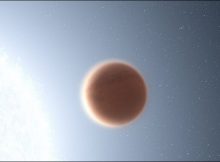
Astronomy
Hubble Probes Extreme Weather On Ultra-Hot Jupiters
| April 7, 2022
Eddie Gonzales Jr. – MessageToEagle.com – In studying a unique class of ultra-hot exoplanets, NASA Hubble Space Telescope astronomers may be in the mood for dancing to the
Read More

